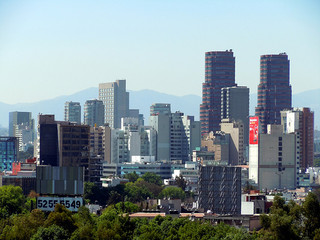For many in the United States and elsewhere, Mexico is most closely associated with poverty, illegal immigration, and drug violence. True, those are all ongoing realities for Latin America’s second giant. Foreign investors, though, are mostly focusing on one word, opportunity.
The Economist magazine recently published a special report on Mexico, to coincide with the presidential inauguration of PRI leader Enrique Pena Nieto on December 1st. The report is truly eye-opening for those who only see America’s southern neighbor as a violence-wracked state on the verge of state failure. In fact, Mexico is moving in a positive direction, propelled by recent strong economic growth and a political system that is maturing.
As Shannon O’Niel wrote in 2009 in Foreign Affairs, the surge in drug violence during the presidency of Felipe Calderon (2006-2012) was a sign of better governance in Mexico. For too long, the one-party system of the Institutional Revolutionary Party (PRI) colluded with the drug cartels. When new federal leadership pushed back against this corruption, the cartels lashed out at the central government. Fortunately, drug-related violence has begun to abate somewhat. The bigger political story, though, is the consolidation of democracy in Mexico, which is further confirmed by the PRI’s return to power.
Though Mexico has registered under-appreciated gains in the political sphere, the country’s impressive economic resurgence seems to have particularly impressive forward momentum. Here the key development is a revitalization of Mexican manufacturing. After some struggles in the decade of the 2000s, the newest OECD member in the NAFTA region is returning impressive industrial growth. Here are a few of the key factors:
- Free trade deals with 44 other states, which is the largest total for any country in the world.
- Mexico’s proximity to the United States market, which affords quick and low-cost access to American consumers.
- An average manufacturing wage rate ($2.10 per hour in 2011) that is now comparable to China’s rate ($1.60 per hour). (In 2000, these rates were $1.50 per hour in Mexico and $0.30 per hour in East Asia’s biggest tiger. Sources: HSBC, The Economist.)
- The relative dependability and productivity of Mexican workers.
- Higher energy prices, which reinforce Mexico’s position relative to Asia’s emerging markets, due to higher transportation costs from Asia to North America.
Mexico’s geopolitical resurgence is supported by other economic strengths. International tourism arrivals have remained strong, despite the drug violence. The country is still a significant energy producer. And Mexico’s agricultural sector continues to show signs of dynamism.
Mexico is rising. Arguably the clearest indication of this is the confidence that international investors are placing in the country. World leaders like Siemens, LG, Nissan, and Ford are voting with their dollars, euros, and yen. The Pentagon’s 2009 warning about Mexico becoming a failed state is not coming true.
